Forget-me-not marsh: description, cultivation and application
Forget-me-not marsh is one of the most beautiful representatives of Angiosperms, growing in wet meadows or coastal areas of water bodies. For several years now, it has been widely used as a decoration for flower arrangements and for growing in flower beds. We will consider how to grow this wonderful plant in this article.
Content:
- Forget-me-not legend
- Description of the building
- Where is the swamp forget-me-not grown
- Planting forget-me-not swamp
- Care for forget-me-not swamp
- Application area
Forget-me-not legend
Forget-me-not belongs to the Burachnikov family. It got its name from one legend. Once upon a time there lived a young man and a girl who tended the flock and were deeply in love with each other. Once the young man was sent on a long trip about which the girl was very sad. Before parting with her beloved, she cried a lot, and her fallen tears, falling into the grass, turned into little blue flowers. Having plucked them, the girl gave to her lover, asking not to forget about her. This is how the name of the little blue flowers came about - forget-me-not. In many countries, forget-me-not was associated with the devotion and loyalty of lovers who are far from each other.
In honor of this flower, many peoples organized celebrations and festivities:
- England at the time of the celebration of the "Queen of May" was left without a king and queen, who left for celebrations in the forest, where they chose the most beautiful girl, the owner of this title. A tree was subsequently planted near the house where the chosen "Queen of May" lived. Many beauties in England dreamed of possessing this title.
- Germany, celebrating the "forget-me-not" day, reduced the number of children in schools to travel to the forest for walks. There, among the children, various games were held, accompanied by singing and collecting bouquets of forget-me-nots.
- France, famous for its special love for this flower, has established the tradition of giving forget-me-nots at parting and keeping them until we meet again.
Forget-me-not is sung in numerous works of poets and writers of foreign countries. Holland healers have used this plant to prepare a medicinal syrup that helps with coughs.
To date, the world's leading botanists have described about forty species of forget-me-nots.
In our country, about twenty-five species grow from this list. Many new varieties of forget-me-nots were brought out of the swamp forget-me-not.
Description of the building
Forget-me-not swamp reaches a height of about thirty centimeters. Its homeland is the territory of Western Europe. The perennial plant of the forget-me-not grows preferably in humid areas.
Forget-me-not features:
- Forget-me-not has weakly pubescent leaves, reaching a length of up to five centimeters.
- The leaves are quite close to each other on the stem and persist until the first frost.
- Forget-me-not marsh blooms quite early, in spring or in the first decade of June.
- Small flowers have a beautiful blue tint, quite noticeable against the backdrop of awakening nature.
- Small flowers of the swamp forget-me-not are not afraid of unheated air and temperatures of no more than ten degrees.
Where is the swamp forget-me-not grown
Forget-me-not marsh today is actively grown in flower beds not only by professional gardeners, but also by amateurs. At home, it can also be successfully grown to decorate a window or garden. Azure forget-me-not flowers have long been included in various flower arrangements, decorating them. Decorators use the swamp forget-me-not to create various flower arrangements. Forget-me-nots are a wonderful decoration for greenhouses.
Forget-me-not swamp is grown for bordering the coastlines of garden ponds, mixborders, as well as near curbs.
You can plant the swamp forget-me-not by the method of ordinary self-seeding, thanks to which its two-year or long-term ability to grow will make blue flowers an integral component of decorating a garden or flower bed for a long time.
It is recommended to prune the blooming forget-me-not marsh periodically to ensure the formation of new flowers on the plant. The swamp forget-me-not is capable of self-reproduction, due to which it is much easier to care for it.
Planting forget-me-not swamp
Plant Growing Secrets:
- The selected area for planting the forget-me-not swamp must be dug well, saturating it in the same way with oxygen and fertilizers of organic or mineral origin.
- For the swamp forget-me-not, the amount of moisture in the soil is important, therefore, in case of a lack of moisture, the soil should be saturated with peat or turf, which are capable of retaining liquid.
- For the swamp forget-me-not, planting a plant with the help of seeds in shallow holes of the soil is characteristic. She prefers clay or sandy-clay soil horizons, well moistened with a thick layer of humus.
- You can plant swamp forget-me-not seeds in spring or summer, when the air temperature rises above ten degrees Celsius.
- Seeds are planted in open ground in shaded areas. Forget-me-not does not like the bright sun and its direct rays, so it is worth choosing areas for its growth according to these conditions.
- Plant forget-me-not swamp can also be done by vegetative propagation. It is based on dividing the forget-me-not bush in the spring or early summer period.
- Forget-me-nots should be picked when up to three pairs of green leaves appear on the plant.
The forget-me-not plant is quite moisture-loving and needs watering.
She is resistant to spring frosts and is not afraid of low temperatures in May. On a small plot of one square meter, about twenty perennial forget-me-not plants can fit for comfortable growth. In the first year of life, the marsh forget-me-not forms only a leaf rosette of leaves. During the second year, it forms flowers.
Care of the swamp forget-me-not
The emerging seedlings should be looked after quite carefully, periodically weeded and fed, water and loosen the upper soil layer in a timely manner. Before the onset of the winter period, plants are mulched, and coverings are made in areas with little snow.
Quite unpretentious care forget-me-not marsh, needs careful watering. It should be moderate enough, with a constant amount of moisture at the roots. Drying up for forget-me-not marsh is destructive. Excessive watering of the plant can also provoke its death. Especially the swamp forget-me-not is demanding on the moisture regime after two years of growth in one area.
Watering should be done at least once a week, with plenty and gradually saturating the lower layers of the soil with moisture.
Forget-me-not marsh does not require an abundant amount of sunlight. When growing it at home, the pots are best placed in the eastern zone of the room. The semi-shady location is ideal for the growth of this species.
Like every plant, swamp forget-me-not is susceptible to the development of diseases and destructive activities of pests. Her enemies are:
- Root rot
- Cruciferous flea
- Smut
- Aphid
- Scoop
- Powdery mildew
- Gray rot
Having discovered the appearance on the leaves of signs of the development of diseases or eating by insect pests, it is worth immediately starting to fight them. Depending on the type of pest, appropriate control measures are used. In modern stores there is a wide range of drugs that can rid plants of this or that pest. Having carefully read the instructions for use, spraying is carried out in the evening hours.
Application area
In addition to decorative purpose swamp forget-me-not is also used for medicinal purposes. From its vegetative parts, medicinal teas are prepared, which are good diaphoretic agents for patients with respiratory diseases. In medicine, not only the leaves and stems are used, but also the sap of the plant and its flowers. Swamp herbal decoctions prepared on the basis of forget-me-not are used in the form of eye lotions to soothe the eyes. The ether secreted by flowers can have a detrimental effect on bacterial microorganisms.
The plant contains a large number of various alkaloids required for the manufacture of various drugs.
Forget-me-not is rich in fatty acids and lipids. This feature is also used in the production of compounds and substances necessary for humans. The seeds contain aliphatic hydrocarbons, which are also necessary for the production of organic chemistry compounds.
Thus, swamp forget-me-not is not only a wonderful flowering plant, but also an irreplaceable source of medical production.
More information about forget-me-nots can be found in the video.



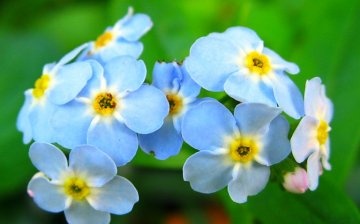
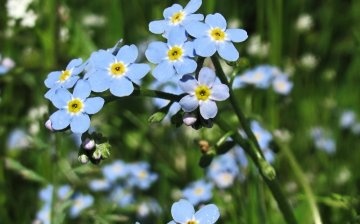

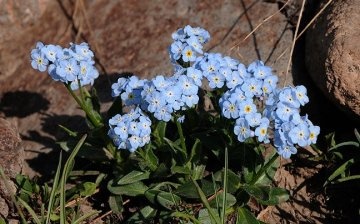
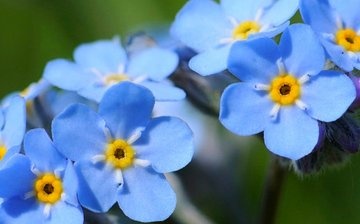
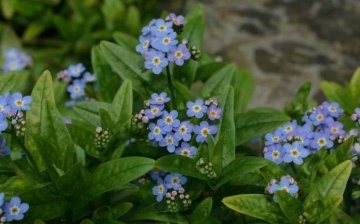
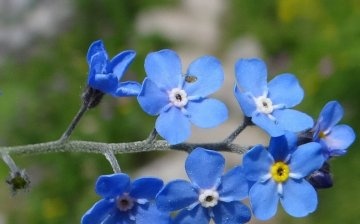







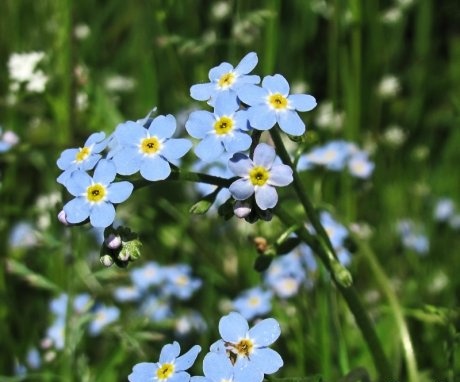

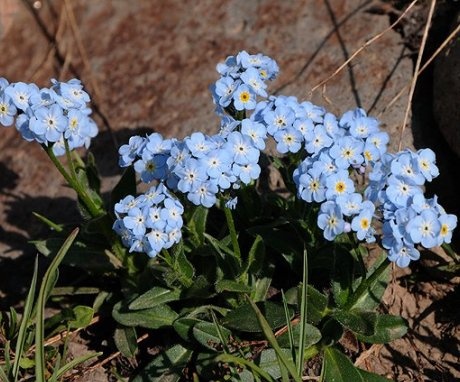
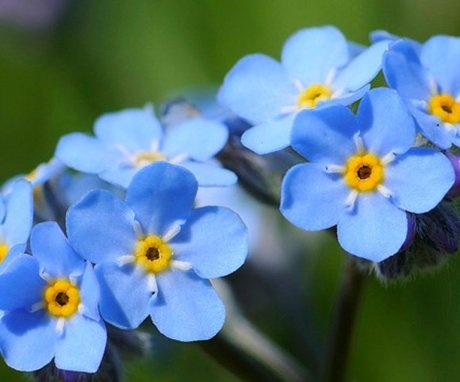
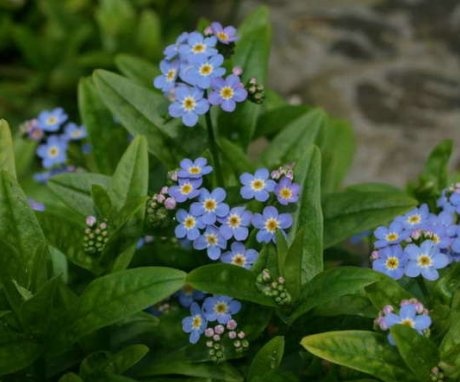
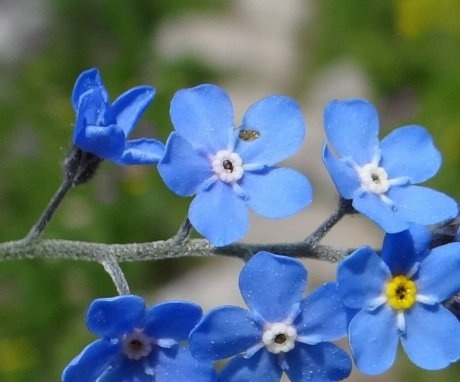
The legend about the origin of the name of the forget-me-not is very beautiful. As well as the flower itself, which by its appearance immediately attracts attention. Judging by the description, the plant is unpretentious to the conditions, so you can try to plant it at home.